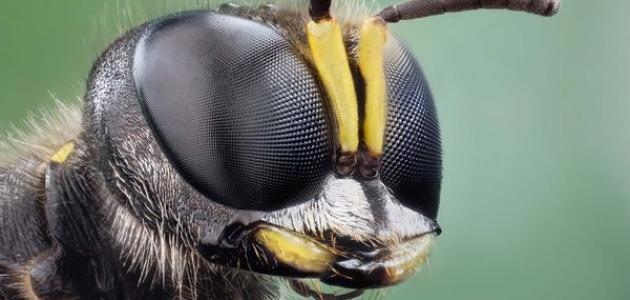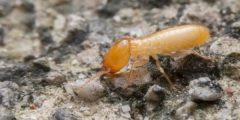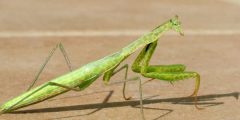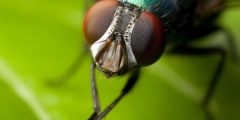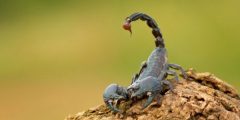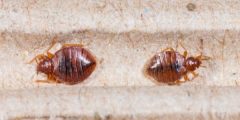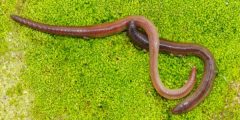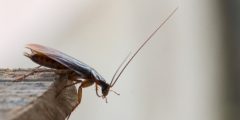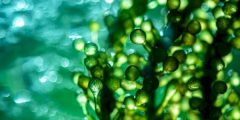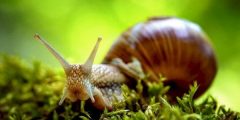Bee
Bees are found in Africa, Europe, China, eastern India, and the Americas, but it is believed that the original home of bees is areas with a tropical climate and dense forests. Where bees build their nests inside tree cavities.
Bees play an essential role in life. They serve humans and the environment. People believe that bees only make honey, but their mission is not limited to producing honey only. They also produce beeswax, which is used in making candles and many other products. Bees also help plants Reproduction, which works to pollinate flowering plants by transferring pollen grains from one plant to another, and the bees that help in the pollination process are called pollinators.
The number of bee eyes
The bee's body consists of rings that merge with each other to form three parts: the head, the thorax, and the abdomen. In the head there are sensory areas and the mouth, which is a solid box called a capsule, and at the top is the bee’s brain. The head without the bee’s mouth parts is called granium (in English: Granium), and inside the head there are external organs, which are the eyes, antennae, mouth parts, and internal organs. These are the brain, subneural nodes, maxillary glands, endocrine glands, internal secretion glands, and salivary glands. There is a difference between the queen, the worker, and the male in the structure of the brain and the various glands.
In total, each bee has five eyes on different parts of its head, and it has two different types of eyes, which are compound eyes and simple eyes, and each of these two types has special functions and uses that are different from the other.
Read also:slugs
Compound eyes
Bees have two compound eyes located on either side of the bee's head. Each of the eyes contains 6,900 small optical lenses, and each lens consists of a large number of light-sensitive cells. These small lenses are grouped into groups numbering 150, each of which is called ommatidia. Each ommatidia connects directly to the optic nerve, and each group has a special function: such as distinguishing colors, capturing polar light, or detecting movements in front of it.
The compound eye is distinguished by its ability to distinguish movements separated by 300/300th of a second. If the movement takes 50th of a second, the bee can see its beginning and end. This is an ability that exceeds the ability of the human eye, which can distinguish movements separated by less than 1965th of a second. Bees have the ability to distinguish short-range waves such as purple, blue, and yellow, so most flowers that attract bees are colored blue, purple, or yellow. The bee's eyes do not have the ability to distinguish the color red, and there are fine hairs in its compound eye that help determine the direction of the wind. So that the bee remains on its correct path in stormy weather conditions, and in an experiment conducted in XNUMX AD when these hairs were removed, the bee was unable to determine its path or track the direction of its food.
Read also:Information about the butterfly
Simple eyes
Bees have three simple eyes located in the middle of the top of the head, and a person needs to look at them from a very close distance to distinguish them. Each eye is composed of only one lens. Its function lies in enabling the bee to determine the location of the sun and know its direction of travel accurately. The bee’s eye is considered sensitive to light. So much so that it is able to penetrate a thick cloud to determine the location of the sun in bad weather conditions. It is worth mentioning that the bee does not sleep, but rather remains calm throughout the night to preserve its energy for the next day.
The antennae of the bee
Each antennae consists of 12 antennae, and the antennae carries receptors for chemical stimuli, and its function is similar to that of the human nose. Through it, the bee distinguishes the scents of flowers and keeps them in her memory. It also distinguishes the scents of other insects and the scents of the members of the hive by receiving the pheromones that they secrete. served Pheromones provide alarm and warning if the hive is exposed to danger. The antenna also contains receptors for mechanical stimuli, which are responsible for the bee’s sense of hearing. It performs the function of the ear in humans, receiving vibrations and sound frequencies and sending them to the brain so that it can translate them and hear the sounds. Through it, the males distinguish the queen by hearing the vibrations of the movement of her wings so that only one male can fertilize her.
Read also:What does the butterfly symbolize?
Bee's mouth
As for the bee’s mouth, it is made up of two upper jaws, two lower jaws, an upper lip and a lower lip. The lower lip consists of two labial surfaces, the tongue and the labium. The parts of the mouth have modified to help the bee feed on the nectar of flowers. Bees need the jaws to chew pollen grains and form wax molds. As for the nectar What the bee collects is transported to the mouth by the tongue with the help of parts of the jaw and lower lip and by means of a suction proboscis.
Types of bees and their importance
There are many types and colors of bees, some of which are brown or black, and some are striped with white, yellow, or orange. The bee’s body is covered with hair that helps it collect nectar. There are more than 4,000 species of bees in the United States of America that are able to live in their environment and survive without the slightest help from humans. Worldwide, there are more than 16,000 different species of bees belonging to several different species.
The importance of bees is not limited to producing one type of honey only, but rather they produce many types that differ in taste and color, depending on the type of flower from which the nectar was collected. Many types of bees are attracted to only one type of flower, which reduces competition among them. There is no preference in bee species or breeds; Each beekeeper prefers a different type from the other, depending on the characteristics he desires.
Bees also pollinate plant flowers; Many of the types of vegetables and fruits that we eat are the result of bees pollinating the flowers of their trees, such as almonds, apples, avocados, berries, cherries, watermelon, pears, and strawberries. Farmers often make beehives near the plants that are preparing to flower in order to... What is the process of vaccination? Bees make beeswax, which is used to make some types of candles. Candles made from it are more luminous and glowing. Beeswax is also used in making some cosmetics and furniture polishes.
Bee Kingdom
Bees live in a colony made up of cells, and its members consist of the queen, female workers, and males, each of which has a different function:
the queen
The queen's job is to lay eggs only, and she lays 2,000 eggs daily for two to five years, and the number of eggs she lays depends on the amount of food she eats.
Female workers
Most of the workers in the Kingdom are female, and their number reaches approximately 60,000 workers. The workers have several jobs, including building the kingdom, caring for the larvae, feeding the queen, and maintaining the cleanliness of the cells. The jobs of the workers in the Kingdom change according to their age. Once the egg hatches, they begin The female's job is to clean the cells, and when she matures a little, her job becomes to feed the queen and the larvae and take care of them. On the tenth day, that is, when her wax glands mature, she begins the job of building cells in the kingdom, and when she reaches the sixteenth to twentieth day, she begins to receive pollen from the older bees and preserve them. In the cells, in their last remaining days, they begin to collect nectar and pollen.
The female bee is characterized by having a pollen basket, which is often on the back leg, and consists of rows of hard hairs curved to form a hollow shape from the inside. When the bee absorbs pollen from the flower, it sticks to this hair. As for the males, they do not absorb pollen and therefore do not need They have a pollen basket, like females. There are also types of bees, such as parasites, that do not have a pollen basket either. The bee absorbs the nectar of the flower with its tongue and then stores it in its body until it returns to the hive to work on converting it into honey later. It can also store large quantities of honey for nourishment. On it later.
Males
The number of males or dragonflies in the kingdom is somewhat small, and once they hatch, their job becomes to feed their female sisters, until they mature and become able to fly to search for the queen to fertilize her. They are distinguished by their huge eyes that are able to distinguish the queen from great distances, and the male who fertilized the queen is considered the strongest among them. Males, and the male dies as soon as fertilization is complete.
